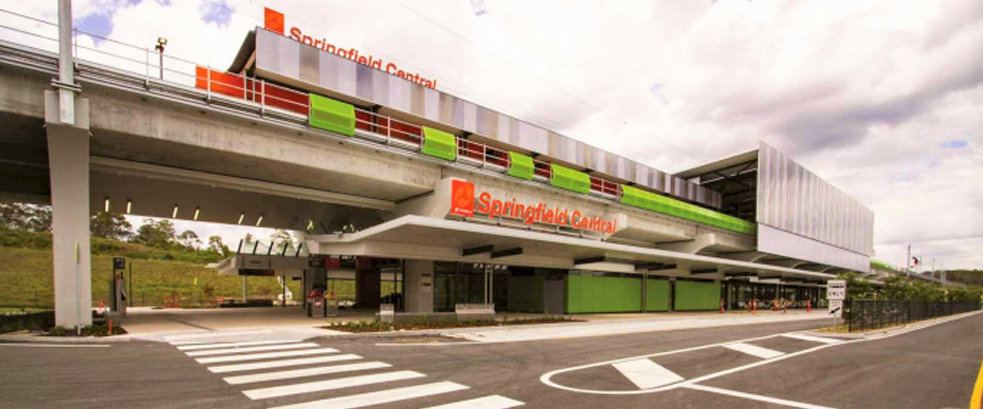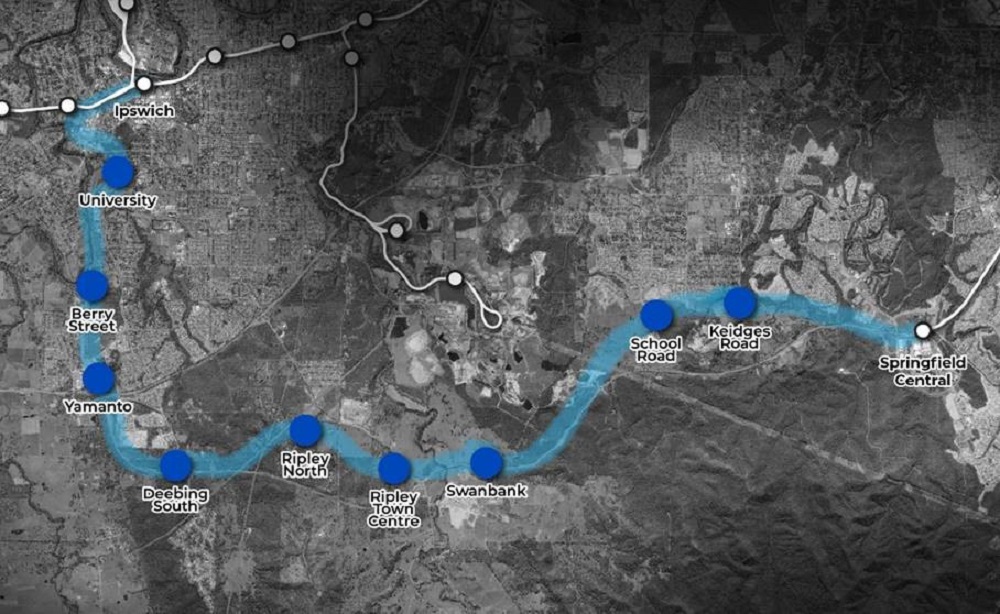Ipswich City Council has announced a step forward on a major project for the region, with the recommendation to make a submission to Infrastructure Australia in support of a 25km public transport corridor between the Ipswich CBD and Springfield Central.
The area is a preserved 25km public transport corridor that connects the two centres via Ipswich’s key growth region through Ripley and Redbank Plains.
Mayor Teresa Harding said that the significant population growth in the Ipswich to Springfield corridor made this project a high priority for the city.
“The strategic assessment provides a compelling case and is time imperative for the development of the corridor across transport, land use, and social outcomes,” the mayor said.
“Ipswich is the fastest-growing region in Queensland, with a yearly rate of population increase of more than 4 per cent – that’s approximately 3 per cent above the state and national averages.
“Ipswich is a city of opportunities and connectivity through this corridor will ensure we become the most liveable and productive region in Queensland.
“With approximately 70 per cent of the population growth in Ipswich occurring in the region between Ipswich and Springfield, this public transport corridor will help to ensure that the people of Ipswich keep our great lifestyles as the region grows.”
Mayor Harding said it would also encourage people to live and work in Ipswich, a city with the highest forecast growth in Queensland of 4.6 per cent per annum to 2036.
Chair of the General Purposes Committee Cr Andrew Fechner said that the project – colloquially known as I2S – should be at the centre of council’s work on infrastructure across the three levels of government
“This is one of the single most important regionally significant projects for us to be championing as a new council. As our communities expand we need to maintain good connectivity and access to work, education and health services,” Cr Fechner said.
Over the past six months, council has been progressing and has now finalised a strategic assessment for the corridor, the first stage in the Building Queensland business case development framework.
The business case for the project indicates that the development of the corridor would provide a catalyst to mixed-used land outcomes, including the potential to encourage economic hubs and enhanced service provision along the corridor, providing residents with employment and service accessibility opportunities, and local business with investment opportunities in close proximity to a large residential workforce.
The report to council, presented at the General Purposes Committee today (21 July), recommends four options to be taken forward to the next stage of the business case process for the I2S corridor, focussing on heavy rail, light rail, trackless trams and rapid bus transport.
The I2S public transport corridor will now be the subject of a targeted advocacy campaign by council and local peak bodies to attract State and Federal Government support to progress the project to the options assessment stage of the business case development framework.
Council will work closely with the State Government’s Department of Transport and Main Roads on future stages of the business case, and will also make an initial presentation to Infrastructure Australia representatives on Wednesday 22 July. The options assessment is predicted to cost $2.5 million and take 12 to 18 months to complete.
“This council will be working hard to attract funding for the options analysis. We cannot afford to waste any time on moving this project along,” Mayor Harding said.
Strategic Assessment highlights:
- There will be continued growth in private vehicle use without further investment in the transport system connecting Ipswich and the broader SEQ region, resulting in an increase in road congestion and reduced freight efficiency.
- The land use and dwelling population targets set out in the SEQ Regional Plan for the Ipswich, Ripley and Springfield areas will not be achieved without investment in the transport system, leading to inefficient urban form and land use outcomes.
- Equitable access to services and employment opportunities such as education, health, employment and recreation are inhibited by a lack of affordable mobility options and transport disadvantage, impact on the liveability of the Ipswich region.
- The absence of connectivity and accessibility between Ipswich, Ripley and Springfield inhibits the growth in these centres and the corridor.
- A lack of multi-modal transport options will require continued investment in the road network connecting Ipswich, Springfield, and Brisbane, to be able to provide for continued increased demand.
- Developing an affordable, sustainable and innovative mass transit corridor that captures significant current and future demand catchment will encourage strong economic growth in the region.
- Enhancing connectivity and accessibility in the SEQ region through improving liveability and achieving the 30-minute city and 45-minute region targets.
Read More
>>>Report cements importance of Springfield Central to Ipswich Central rail line




It is interesting that there is now apush on to develop the public transport corridor, up to Deebing Hts South might work OK, however from there on in it will be a fight to secure the land necessary. The northern boundary of Cenertary Highway is now already on the fence line of the current development. The route from DHS to Yamanto then Beery Street seems a bit strange as recently there has been development of retail outlets and now a Major Band Centre on Warwick road. Considering parking need to go up at the station due to the lack of land / space. It is going to be a tight squeeze considering all the safety requirements that rail require. This planning should have been done years ago by both the State and Council however no vision or foresight. So if this rail goes ahead Deebing Hts will just get more congested and cluttered. This plan is way to late and really doesn’t fit other development occurring now
What we need is a independant high frequency bus link not a transport corridor. either a busway or metro so it can grow with demand.
Railway is too expensive to build and oeprate and will not be attractive to people. a rail network will only encourage more people to live along the route and use it to get to Brisbane. this will not bring jobs to the region rather a cheap place to live. economic prosperity only comes if you can attract jobs to the region and not just people to live in. A railway will devide the region again and need expensive bridges unlike roads to connect communities. you need pedestrian overpasses, fences and are noisy.
if done right a high frequency bus network will give the flexibility to change the start and end points. fast middle section with various destinations at Springfield and Ipswich. this will bring jobs and encourage big business to relocate.
Lets not do trophy projects instead have real innovative thinking.